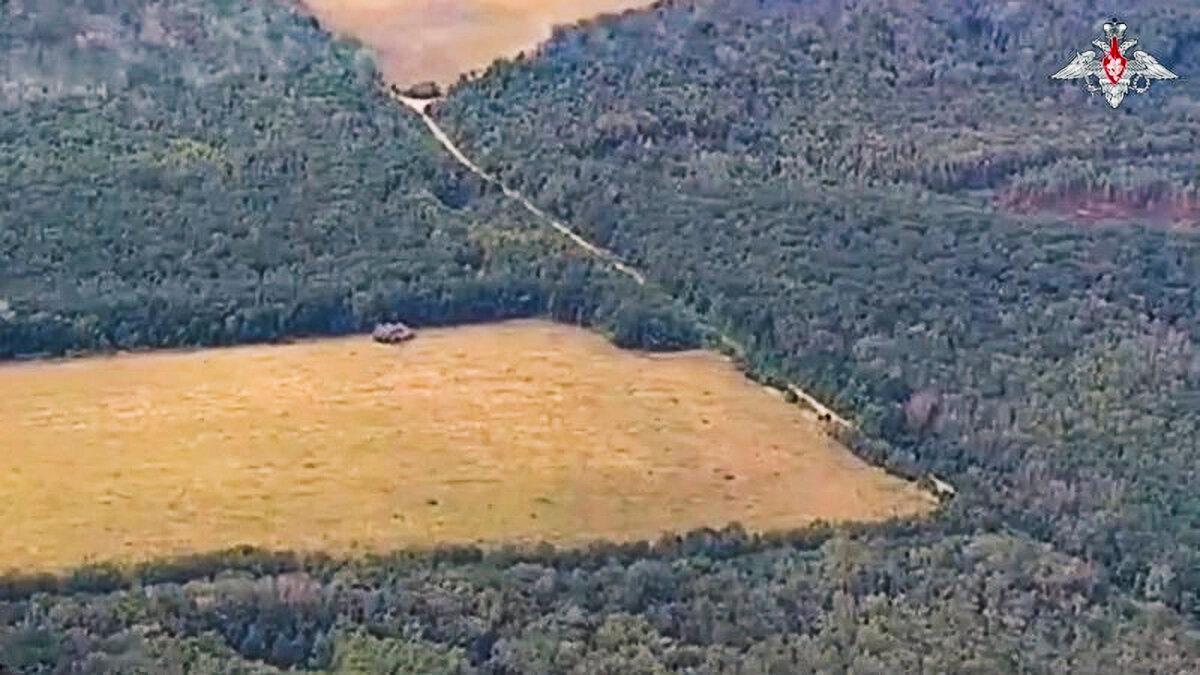Nine days into their surprise Kursk attack, Ukraine has claimed a 444-square mile swathe of Russian borderland.
Throughout history, military commanders and observers have tried to see through the hazy layers of imperfect or outright false information and deception in the chaos of the battlefield—to see through the fog of war.
When Ukrainian forces launched their foray into Russia’s western Kursk region last week, they brought the fog of war with them. That fog still surrounds many questions as the cross-border assault stretches into its second week, but the haze is starting to clear.
The initial Ukrainian attack, by many indicators, caught Russia by surprise. As those Ukrainian troops blitzed across the border on Aug. 6, they swept up large swathes of territory relative to the last two years of the war.
Russian military leaders have suggested they are now regaining their composure. Speaking with the Russian state-owned TASS news agency on Wednesday, Major General Apti Alaudinov said the Ukrainian forces are no longer taking offensive actions in the Kursk front and are instead starting to dig in.
The Epoch Times cannot independently verify battlefield claims made by either side.
A Break From The Quagmire
The early moments of the Kursk assault marked a tonal shift from how both sides have been fighting since late 2022.
This 2022 Kharkiv offensive marked the last major territorial swing of the first 2 1/2 years of the war. Ever since, the conflict largely shifted from a series of large-scale maneuvers to a grinding battle, in which Russian forces have had to mass large numbers of troops and resources to dislodge Ukrainian defenders a few city blocks or a few football fields at a time. While costly, this style of warfare has favored Russia, with more manpower and equipment to spare.

Debra Cagan, a senior adviser for the Atlantic Council’s Eurasia Center, said the Kursk offensive demonstrated Russia’s overconfidence in its intelligence and battlespace awareness.
“There’s this view that in the modern battlespace now, no one can do anything in secret anymore,” Cagan said during an Aug. 15 Atlantic Council panel discussion.
Cagan said the reported ambush on the convoy of Russian reinforcements heading to the Kursk border was emblematic of their hubris.
Still, Cagan warned pro-Ukraine observers not to fall into the same trap of underestimating their opponent.
Ukraine’s Kursk Goal Remains a Mystery
Ukraine’s moment of rapid advance in Kursk has led many to speculate on what it hopes to achieve. Zelenskyy and Ukraine’s military leadership have remained relatively aloof about their goals. The Ukrainian president didn’t formally acknowledge the cross-border attack until several days into the battle.
During the Thursday Atlantic Council panel discussion former Ukrainian Defense Minister Andriy Zagorodnyuk said the Kursk operation might’ve begun as a “raid,” implying a short foray into enemy territory and then a planned withdrawal. But, Zagorodnyuk said Ukrainian forces may have changed their plans and decided to hold ground in the Kursk region while they size up the Russian response.
The former Ukrainian defense minister, who held the position from August 2019 to March 2020, said the objective appears to be to force Russia to divert as many troops as possible from the main front to finally drive Ukrainian forces back to their side of the border. But this could change.
“If Russian generals decide not to divert the troops from the Ukrainian Front, then Ukraine will proceed further with the occupation. And of course, that occupation, politically and operationally, creates a massive problem for Russia,” Zagorodnyuk said.
Ukrainian presidential adviser Mykhailo Podolyak has suggested Ukraine may intend to hold onto parts of the Kursk region, to use as a bargaining chip in exchange for Ukrainian territory captured by Russia so far in the war.
“When will it be possible to conduct a negotiation process in a way that we can push [Russia] or get something from them? Only when the war is not going on according to their scenarios,” Podolyak said last week.
Michael DiMino, a public policy manager and fellow at Defense Priorities, was more skeptical of the idea Ukraine could hold land in Kursk long enough to trade it back to Russia in an eventual negotiation. If Ukrainian forces hope to keep their foothold inside Russia, DiMino said they’re going to need to open up a supply route to sustain their frontline troops.
“Ukraine is so, so short on manpower that most of the people that they’re adding to the military, they need to send them into fighting roles at the front,” DiMino continued. “There’s not a lot of bandwidth for a large support function right now in Ukrainian armed forces, and that is a huge problem if you’re going to go on the offensive.”
Moreover, DiMino warned that the Ukrainians may have hurt themselves in the long run with the Kursk offensive.
“If these units get overextended and they get cut off, you know, potentially hundreds of kilometers behind enemy lines, that takes away a whole year’s worth of force generation that the Ukrainians tried to build by expanding the draft and getting more U.S. aid and, you know, trying to build some new brigades and divisions and things like that,” he said. “So they’re squandering that capability. And I think that, to me, is the big risk here.”

Whether they’re trying to maintain Ukraine’s element of surprise, or they’re struggling to see through the fog, the U.S. military has offered few additional insights into Ukraine’s plans in the Kursk region.
“Throughout the department, we are engaging with the Ukrainians trying to get a better understanding of their objectives,” the Pentagon spokeswoman added.
“We’re going to continue to monitor, but I’m just going to have to leave it at that right now.”
The Associated Press contributed to this article.
Source link








































Add comment